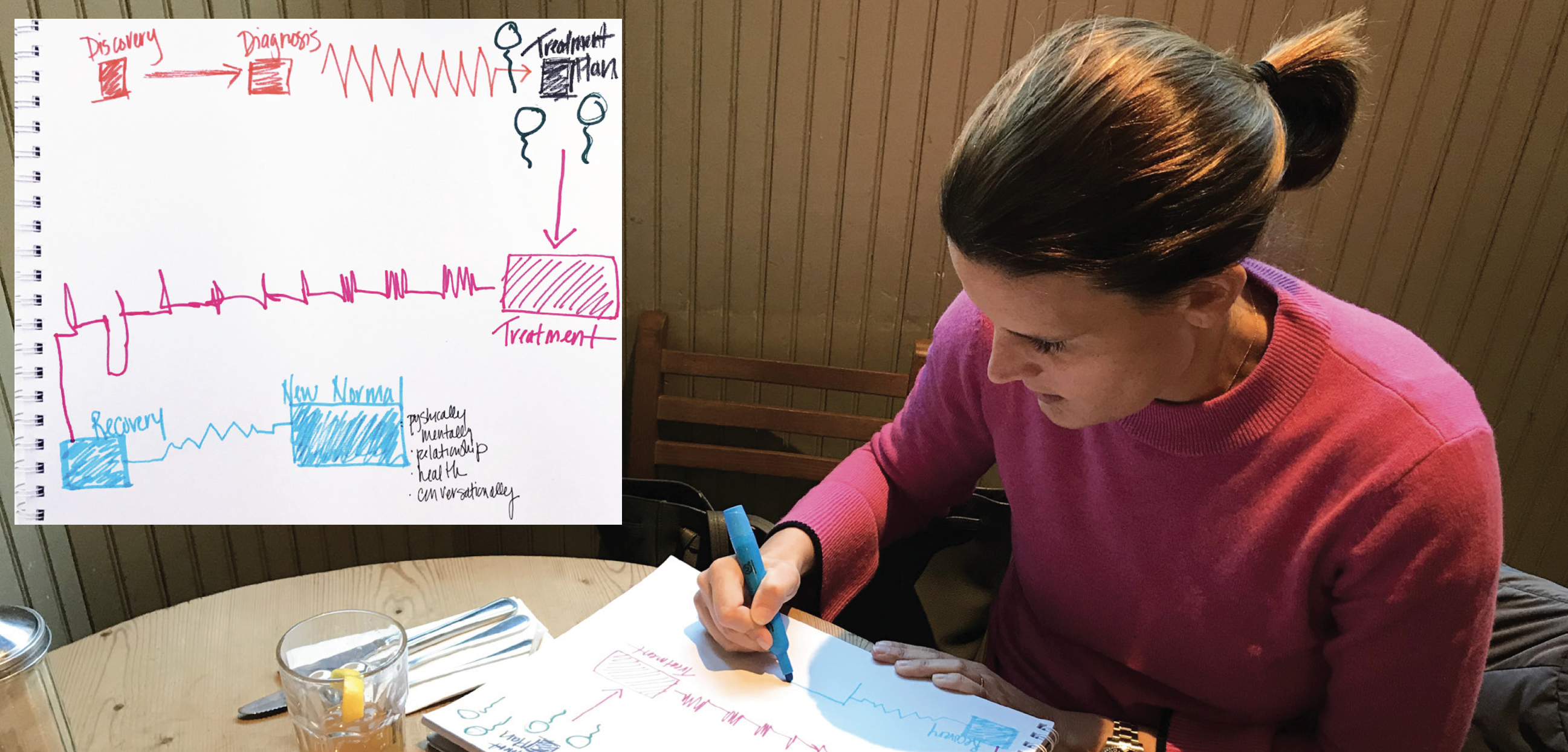At present, there is currently no consistent way of describing or visualizing patient journey at MSK cancer hospital. Different staff members use different terms to describe the different phases of the patient’s experience through the course of the treatment. What’s even more rare is for the staff to share an overview of the patient’s journey with the patient or their loved ones. The second design intervention deals with the patient and their journey, with the goals of emphasizing progress and acknowledging milestones, as well as easing emotional and physical adjustments during various transition points. This intervention is clinician-led and interaction is designed to occur at oncology clinics.

Going through cancer treatment can be a traumatic experience. Patients may experience trauma as they are diagnosed, go through treatment, experience deviations from their plan and deal with life, work, relationships, financial circumstances and physical side effects along the way. Cognitive behavior therapy uses narrative construction as a tool to allow patients who have experienced trauma to make sense of what happened to them. Creating a shared language around the patient journey can provide a scaffolding that patients can use to help them construct their personal narrative.

A linear representation of patient journey

Current patient journey
Patient journey visualization resulted in a unique design artifact that empowered patients to prepare for what is to come and also make sense of what happened to them. It created a shared sense of language, was representative of multiple patient journeys, and also allowed space for clinicians and patients to confront the uncertainty that is inherent to the cancer experience. This was a synthesis of a wide range of patient journey maps, mapping their experiences and capturing their language. The visualization would be used as a visual aid for the patient, doctor or nurse to draw over it, making it relevant to the patient’s circumstances. Having the visualization in front of them serves as a way to acknowledge the progress already made, articulate next steps, and create a foundation for patients to ask questions and seek clarifications.
Watch the evolution of the patient journey map.
Watch the patient journey tool being used. How would this intervention be used in and our of hospital setting?

